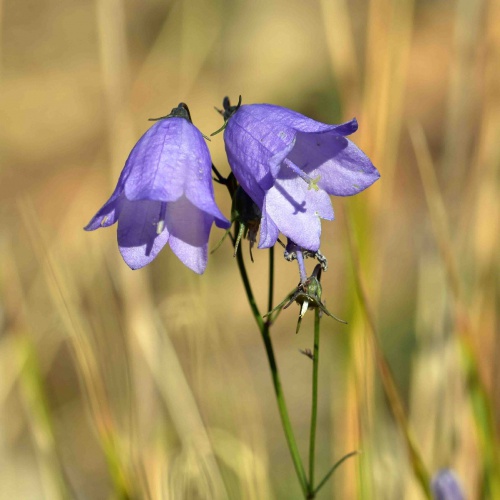Harebell - Campanula rotundifolia
Short to medium, usually hairless stoloniferous plant, stems ascending to erect. Leaves linear untoothed and unstalked. Flowers blue, 12 to 20 mm long pendant bells.
Provide a photograph on the plant in its habitat (RPR)
Dry, grassy habitats, hills, commons, heaths and banks.
July to September
Perennial
Widespread and fairly common in most of Britain, but less so in the south-west of England.
Widespread but declining in Leicestershire and Rutland; threatened by habitat loss.
though possibly declining. In the Flora of Leicestershire (Primavesi and Evans 1988) it was found in 180 of the 617 tetrads, and in the Flora of Rutland (Messenger 1971) in 39 tetrads.
It is listed on the current VC55 Rare Plant Register (Hall and Woodward 2022) because of its threat level and decline; most populations are small.
Leicestershire & Rutland Map
Enter a town or village to see local records
MAP KEY:
Yellow squares = NBN records (all known data)
Coloured circles = NatureSpot records: 2020+ | 2015-2019 | pre-2015
UK Map
Species profile
- Common names
- Harebell, Harebell / Bluebell
- Species group:
- Wildflowers
- Kingdom:
- Plantae
- Order:
- Asterales
- Family:
- Campanulaceae
- Records on NatureSpot:
- 118
- First record:
- 06/06/2003 (Neill Talbot)
- Last record:
- 12/10/2023 (Mortimore, Alan)
Total records by month
% of records within its species group
10km squares with records
The latest images and records displayed below include those awaiting verification checks so we cannot guarantee that every identification is correct. Once accepted, the record displays a green tick.
In the Latest Records section, click on the header to sort A-Z, and again to sort Z-A. Use the header boxes to filter the list.



















